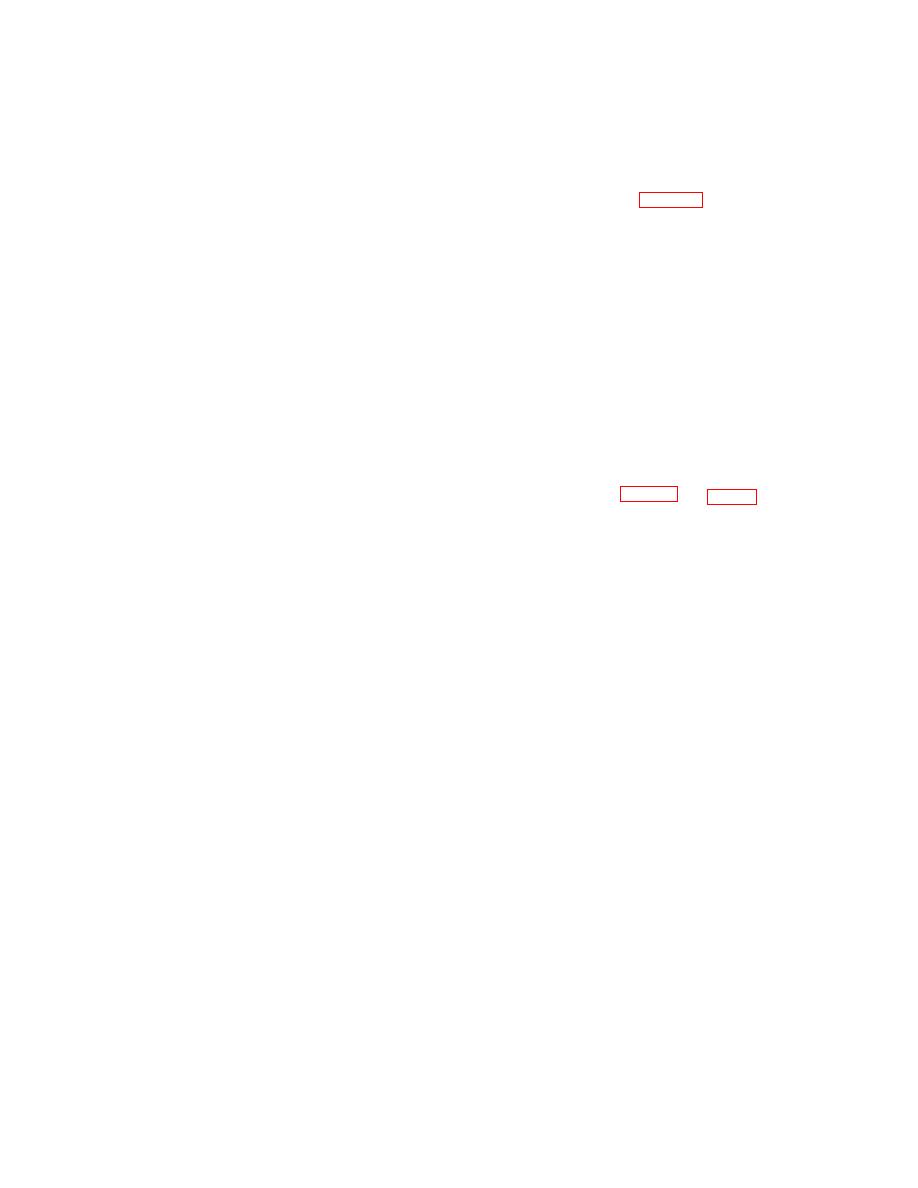 |
|||
|
|
|||
|
|
|||
| ||||||||||
|
|
 (3) Inspect leaf chain for:
Specification PD-680) and then flexing the joint. If the
(a) Cracked side plates. If one cracked plate is
tight joint fails to loosen readily, replace both chains.
e. Installation. Installation of the chain is the
found, replace both chains.
reverse of removal.
NOTE
f. Service and Adjustment.
Checking for cracked plates requires
(1) Lubricate chain and upright assembly as
a close visual inspection after
required by Army Lubrication Order LO 10-3930-625-12.
carefully cleaning the chain. Most
(2) Adjust chain length to equalize the
cracks occur at the pitch holes and
loading on both chains (fig. 4-13).
run out to the edge of the side plates
(a) Lower carriage so that forks rest
at an angle perpendicular to the pitch
on ground.
line.
(b) Loosen jam nut on one upper
WARNING
chain block.
Do not attempt any repairs to a lift
(c) Loosen or tighten hex nut as
chain.
required.
(b) Elongation due to wear. Inspect
(d) Tighten jam nut.
that portion of the chain which flexes over the chain
(e)
Repeat for second chain if
rollers for joint wear. If check indicates elongation due to
necessary.
wear, replace both chains.
4-45. Lift Cylinder
NOTE
a. Clean with an approved solvent (Federal
Elongation due to wear is most easily
Specification P-D-680) and dry thoroughly.
checked while the chain is on the
b. Inspect for breaks, cracks, leaks, loose or
truck.
missing hardware, or other defects.
(c) Tight joints. Inspect the chain for
c. Tighten loose mounting hardware.
bent pins, bent plates or peened over plate edges which
4-46. Tilt Cylinder
will result in tight joints. If tight joints are evident, attempt
a. Removal (fig. 4-7 and 4-14).
to loosen them by applying cleaning solvent (Federal
4-25
|
|
Privacy Statement - Press Release - Copyright Information. - Contact Us |